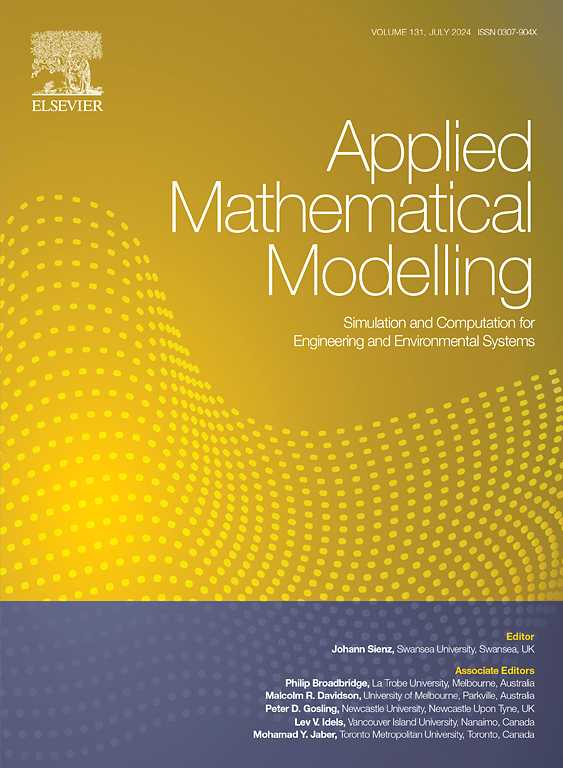Modeling of temperature dependent graded vibration in a piezoelectric microbeam composite plates with a sliding contact
IF 4.4
2区 工程技术
Q1 ENGINEERING, MULTIDISCIPLINARY
引用次数: 0
Abstract
The present study introduces a novel framework for analyzing shear wave propagation in piezoelectric microbeam-dielectric elastic composite plates, emphasizing the temperature-dependent graded factors that influence key material properties. Unlike previous works, which often assume constant material coefficients, this model considers quadratic variations of elastic, piezoelectric, and dielectric coefficients with respect to the temperature graded. The mathematical modeling employs the separation of variables and asymptotic expansions of Bessel functions to derive comprehensive analytical solutions. A sliding contact interface with a sliding parameter is considered, enabling a more realistic simulation of composite structures. The dynamic governing equation, transverse deflection, and Maxwell's equation for electric potential are solved simultaneously across domains, yielding a system of linear homogeneous equations via admissible boundary conditions. The dispersion relations for shear waves are derived for electrically open and short-circuit cases and validated through comparison with existing studies. This study highlights the significant influence of temperature grade, temperature ratio, micro-length parameters in the piezoelectric microbeam, and the sliding parameter on shear wave propagation. The findings provide a theoretical basis for designing and optimizing piezotronic devices, offering enhanced control over elastic wave propagation in composite structures.
求助全文
约1分钟内获得全文
求助全文
来源期刊

Applied Mathematical Modelling
数学-工程:综合
CiteScore
9.80
自引率
8.00%
发文量
508
审稿时长
43 days
期刊介绍:
Applied Mathematical Modelling focuses on research related to the mathematical modelling of engineering and environmental processes, manufacturing, and industrial systems. A significant emerging area of research activity involves multiphysics processes, and contributions in this area are particularly encouraged.
This influential publication covers a wide spectrum of subjects including heat transfer, fluid mechanics, CFD, and transport phenomena; solid mechanics and mechanics of metals; electromagnets and MHD; reliability modelling and system optimization; finite volume, finite element, and boundary element procedures; modelling of inventory, industrial, manufacturing and logistics systems for viable decision making; civil engineering systems and structures; mineral and energy resources; relevant software engineering issues associated with CAD and CAE; and materials and metallurgical engineering.
Applied Mathematical Modelling is primarily interested in papers developing increased insights into real-world problems through novel mathematical modelling, novel applications or a combination of these. Papers employing existing numerical techniques must demonstrate sufficient novelty in the solution of practical problems. Papers on fuzzy logic in decision-making or purely financial mathematics are normally not considered. Research on fractional differential equations, bifurcation, and numerical methods needs to include practical examples. Population dynamics must solve realistic scenarios. Papers in the area of logistics and business modelling should demonstrate meaningful managerial insight. Submissions with no real-world application will not be considered.
 求助内容:
求助内容: 应助结果提醒方式:
应助结果提醒方式:


